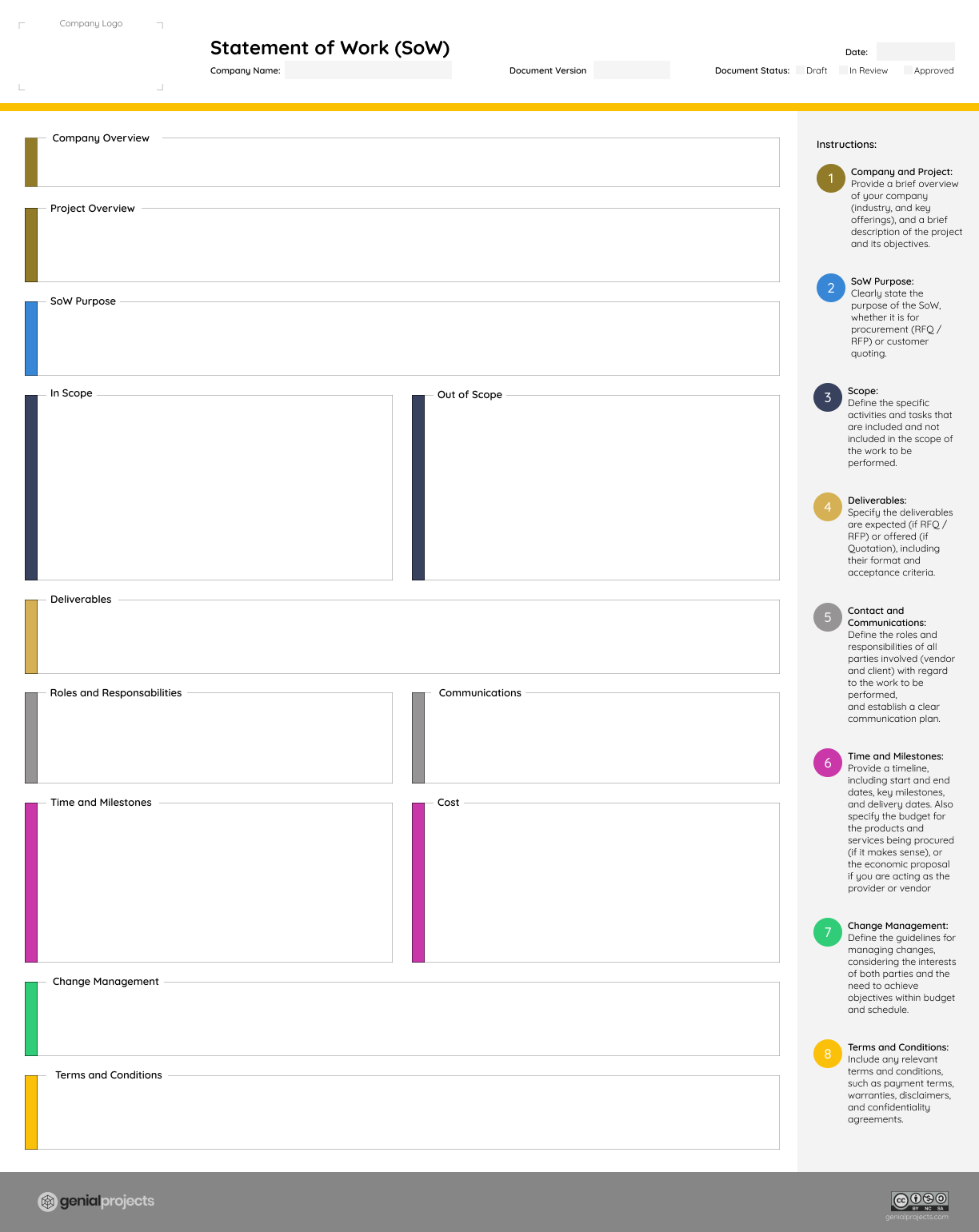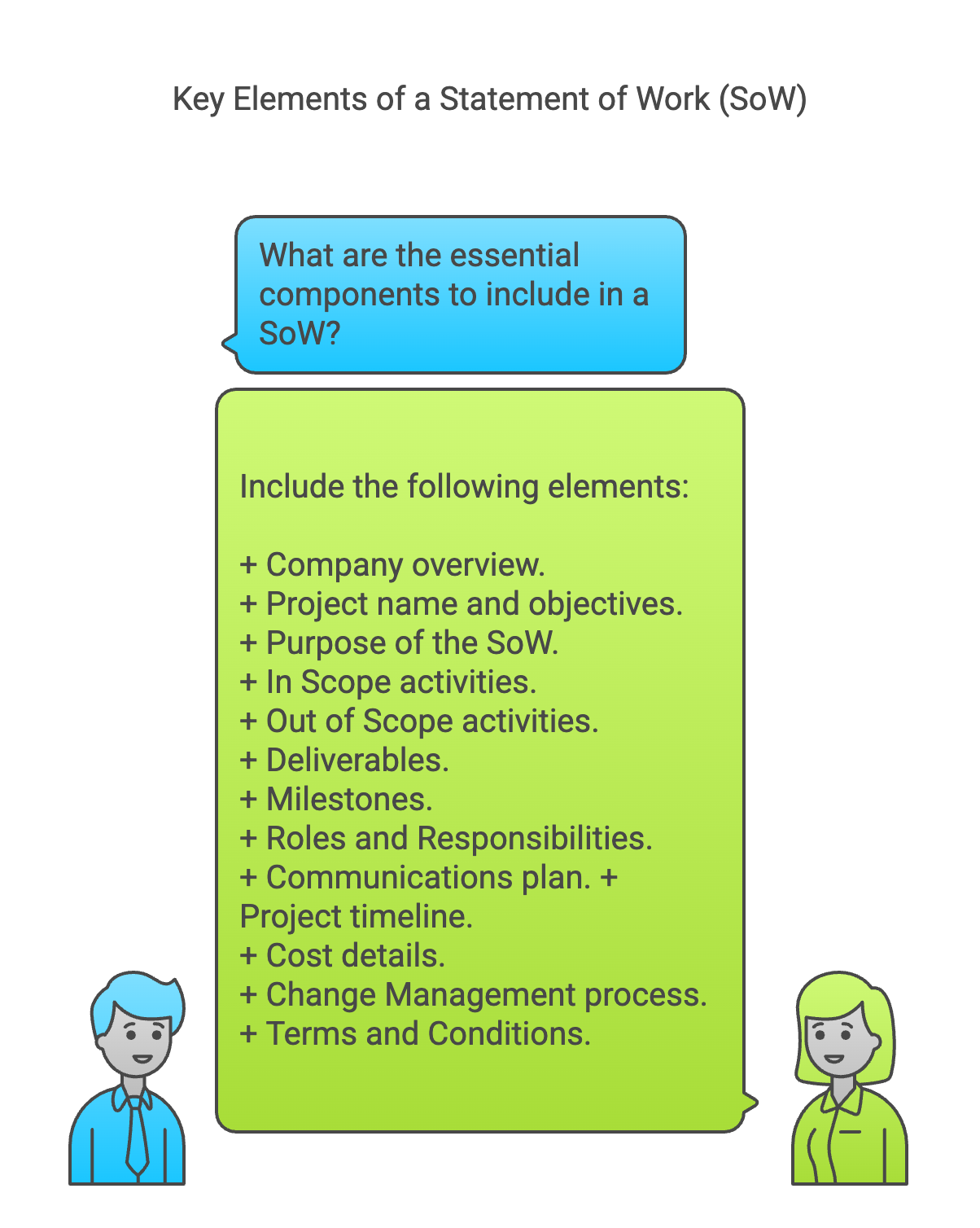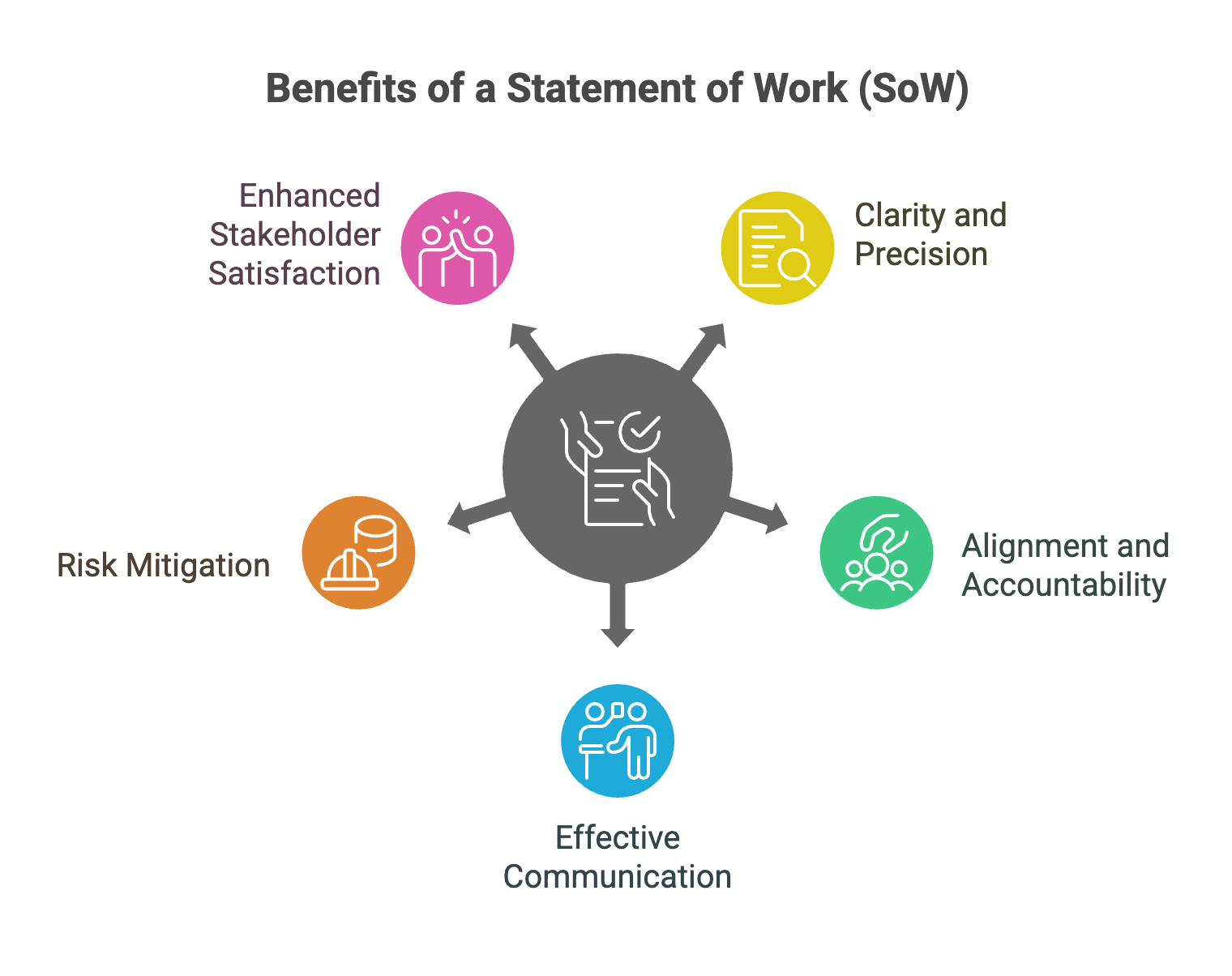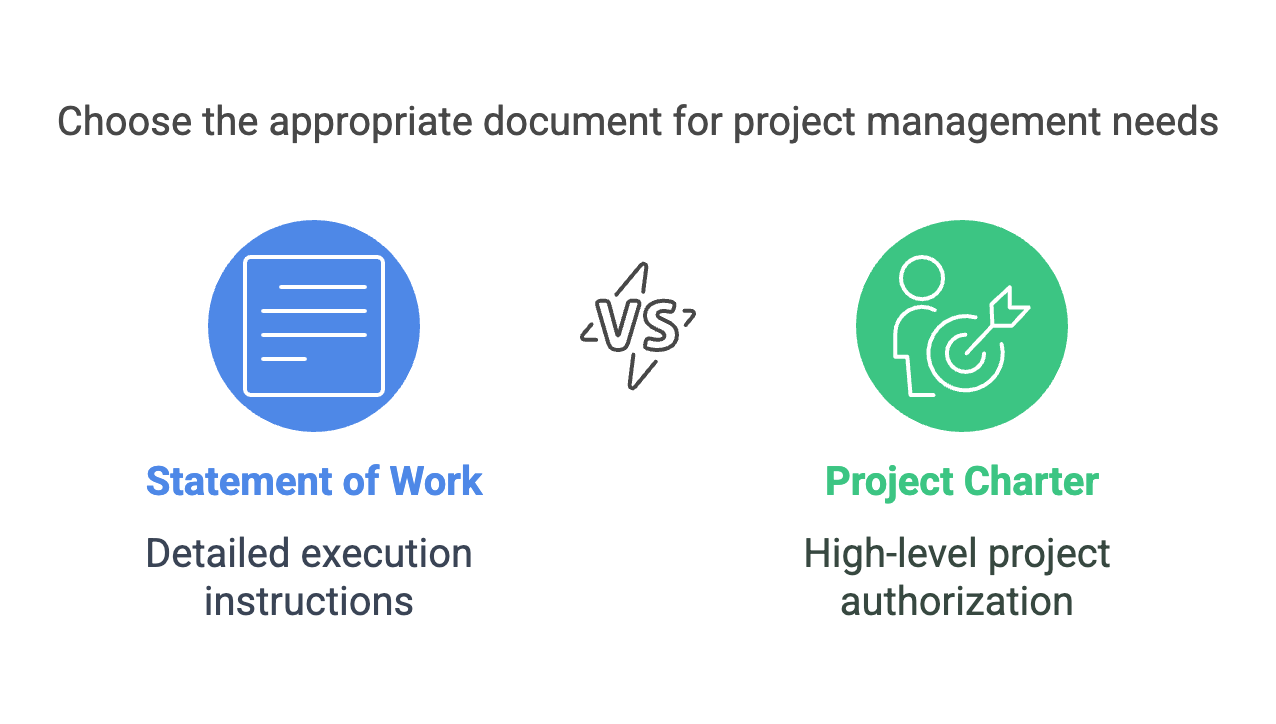Whenever goods and services are purchased, clarity and precision are paramount. Enter the Statement of Work (SoW), a foundational document that delineates the scope, deliverables, and expectations for all stakeholders involved in procurement. From procurement processes to customer quotations, the SoW serves as a guide, ensuring alignment and understanding of the work to be performed among all parties involved.
This article delves into the multifaceted role of SoW, exploring its significance in procurement, customer quoting, and crafting comprehensive project plans. Let's explore the characteristics of SoW and its role in project success.
What is a Statement of Work (SoW)?
At its core, a Statement of Work (SoW) is a comprehensive document that outlines the products and services a vendor or contractor will provide for an organization. Whether it's part of a Request for Quotation / Proposal (RFQ / RFP) or a vendor's Quotation to a potential client, the SoW acts as a contractually binding agreement most of the time, delineating responsibilities, deliverables, timelines, and other variables that need to be defined to ensure a smooth provision of products and services during the project.

SoW in Procurement
Within the domain of procurement, the SoW assumes a crucial role in the RFQ / RFP process. As organizations seek vendors to fulfill their project needs, a well-crafted SoW becomes instrumental in communicating project requirements and expectations. Project managers collaborate with subject matter experts to craft detailed SoWs, ensuring technical accuracy and alignment with organizational goals. Legal advisors also play a role in reviewing and refining the SoW, safeguarding against potential disputes and ambiguities. By incorporating key project details and specifications, the SoW streamlines the procurement process, fostering transparency and accountability.
SoW in Quotations
On the flip side, when vendors respond to client inquiries with Quotations or Proposals, the SoW serves as a cornerstone for articulating their proposed solutions. In instances where clients provide high-level requirements, vendors leverage the SoW to interpret and align their offerings with client expectations. By meticulously detailing deliverables, timelines, and costs, vendors demonstrate their commitment to delivering value and meeting client needs. The SoW not only serves in some cases as a contractual agreement but also as a communication tool, fostering mutual understanding and collaboration between vendors and clients.

Crafting an SoW
Crafting a comprehensive SoW requires attention to detail and a clear understanding of project requirements. Each section plays an important role in delineating project scope, deliverables, and expectations. Below are the elements we recommend including in an SoW:
Company: Provide a brief overview of your company, including its name, industry, and key offerings.
Project: Specify the name of the project and provide a brief description of its objectives.
Purpose: Clearly state the purpose of the SoW, whether it is for procurement (RFQ / RFP) or customer quoting.
In Scope: Define the specific activities and tasks that are included in the scope of the work to be performed.
Out of Scope: Clearly identify any activities or tasks that are not included in the work to be performed .
Deliverables: Specify the deliverables are expected (if RFQ / RFP) or offered (if Quotation), including their format and acceptance criteria.
Milestones: Identify key checkpoints throughout the work to be performed. A good strategy is to group in-scope activities in milestones using a work breakdown structure.
Roles and Responsibilities: Define the roles and responsibilities of all parties involved (vendor and client) with regard to the work to be performed.
Communications: Establish a clear communication plan, outlining how information will be shared and disseminated.
Time: Provide a detailed project timeline, including start and end dates, key milestones, partial delivery dates, if applicable, and the final delivery date.
Cost: Specify the budget for the products and services being procured whenever it makes sense from a business perspective, or the economic proposal if you are acting as the provider or vendor, including any associated costs for labor, materials, and other expenses.
Change Management: Define a process for managing changes, considering the interests of both parties and the need to achieve objectives within budget and schedule.
Terms and Conditions: Include any relevant terms and conditions, such as payment terms, warranties, disclaimers, and confidentiality agreements.

Free Statement of Work (SoW) Template available on our website.
Benefits of SoW

- Clarity and Precision: The SoW serves as a tool for gaining clarity and precision with regard to products and services being procured or delivered. This clarity minimizes misunderstandings and discrepancies, thereby reducing the risk of project delays or failures.
- Alignment and Accountability: One of the primary functions of the SoW is to ensure alignment and accountability among stakeholders. By explicitly defining project objectives and expectations, the SoW helps align the efforts of the parts towards common goals.
- Effective Communication: The SoW supports effective communication throughout the project lifecycle. It provides a common reference point for discussing requirements, progress, and any changes or challenges that arise. This common reference minimizes the likelihood of misunderstandings or conflicts.
- Risk Mitigation: Crafting a comprehensive SoW involves identifying and addressing some potential risks upfront. By outlining key project details, including scope, timelines, and deliverables, the SoW helps project managers anticipate and mitigate risks before they escalate into larger issues.
- Enhanced Stakeholder Satisfaction: Ultimately, the SoW plays a crucial role in enhancing stakeholder satisfaction if it is used properly. By providing clarity, alignment, and effective common reference, it helps to focus on the same goal and avoid scope creep, fostering positive relationships and potential for future collaborations.
SoW vs. Project Charter
While both the Statement of Work (SoW) and the Project Charter serve as important documents in project management, they each serve distinct purposes and cater to different stages of the project lifecycle. The SoW primarily focuses on outlining the specific details of the work to be performed, including scope, deliverables, milestones, roles and responsibilities, timeframes, costs, and other contractual aspects. It helps to ensure that all parties involved (procurer and vendor) are aligned on the conditions products and services will be delivered during projects. On the other hand, the Project Charter typically serves as a high-level document that formally authorizes the existence of a project. It defines the project's purpose, objectives, stakeholders, and initial requirements, providing a broad overview of the project's strategic direction and justification.
Despite their differences, the SoW and Project Charter complement each other in project management. While the SoW provides detailed instructions for executing the project, the Project Charter sets the project's overall direction and provides the authority to proceed. Together, they establish a solid foundation for project success, ensuring clarity, alignment, and accountability throughout the project lifecycle. Understanding the distinctions between these two documents is essential for project managers to effectively initiate, plan, and execute projects while maintaining coherence and consistency across project documentation.

Key Takeaways
The significance of Statements of Work (SoW) in project management, procurement, and customer quoting cannot be overstated. The SoW ensures clarity, alignment, and accountability among all stakeholders involved. From delineating project objectives and deliverables to establishing communication protocols and managing risks, the SoW serves as a foundational document guiding procurement success during projects.
A clear communication of requirements and expectations not only minimize misunderstandings and disputes but also enhance stakeholder satisfaction and pave the way for fruitful collaborations. By understanding the role of the SoW alongside other project management documents like the Project Charter, organizations can establish a robust framework for delivering value, meeting objectives, and driving success in their projects.